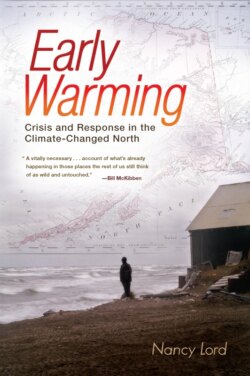Early Warming

Реклама. ООО «ЛитРес», ИНН: 7719571260.
Оглавление
Nancy Lord. Early Warming
I. Mackenzie River Valley, Northwest Territories, Canada
II. Fort Yukon, Alaska
Introduction
Part One My Salmon Home: Kenai Peninsula
Part Two Boreal Forest: At the Arctic Circle
Part Three Sea Ice and Ice Bears: Barter Island
Part Four When a Village Has to Move: Shishmaref
Part Five The Oceanic Realm: Bering Sea
Отрывок из книги
Table of Contents
Title Page
.....
That summer, the stream temperature work Mauger had pioneered on the four Kenai Peninsula rivers was being extended, with state funding, to the rest of the Cook Inlet watershed—forty-eight sites in all. Mauger had worked all winter on the protocols so that data would be collected in a consistent, reliable manner. “We want to try to identify what types of streams are likely to warm fastest, and what types of systems are likely to remain coolest, so we can make some decisions about where to study more about the habitats and the fish. This is really a first cut at looking at different stream sizes and types, the role of wetlands, the role of lakes.” The plan was, after that, for the same monitoring system to be employed by partners and volunteers in the major salmon streams of Bristol Bay (the location of the most valuable salmon runs) and elsewhere in the state.
In this way climate data would be broken out of the broad models and brought down to a local, real-time, and real-place level, to empower communities with the tools and data they need to protect salmon habitat and watershed health. Biologists and land use planners, it’s hoped, will use the data to identify streams most vulnerable to change, then apply it to decisions about further research, habitat protection, water use, and restoration activities. In that ideal world, fishery managers will incorporate temperature information into their modeling of run strengths and escapements (the numbers of fish allowed upstream to spawn). They will also use everything they know about stock structures and life histories to maintain genetic diversity within Alaska’s salmon, knowing that such diversity is critical to the ability of salmon populations to respond to climate change; elsewhere in the world, where individual stocks have disappeared due to overfishing or habitat loss, there’s been little left for filling voids. (This need for genetic diversity, of course, applies to all species.)
.....